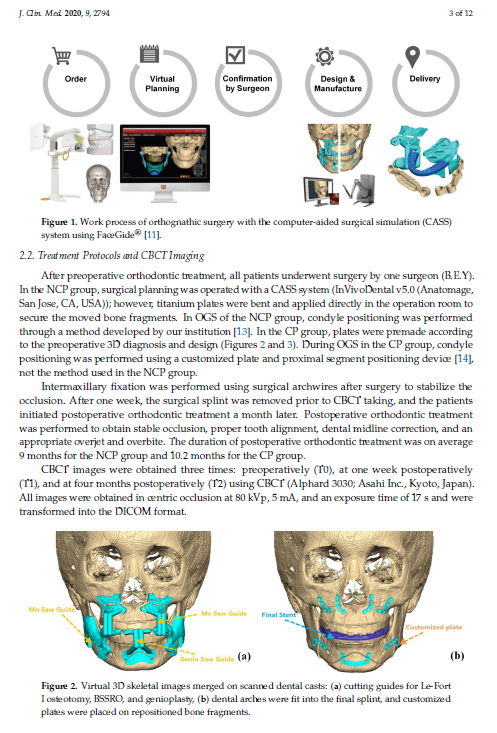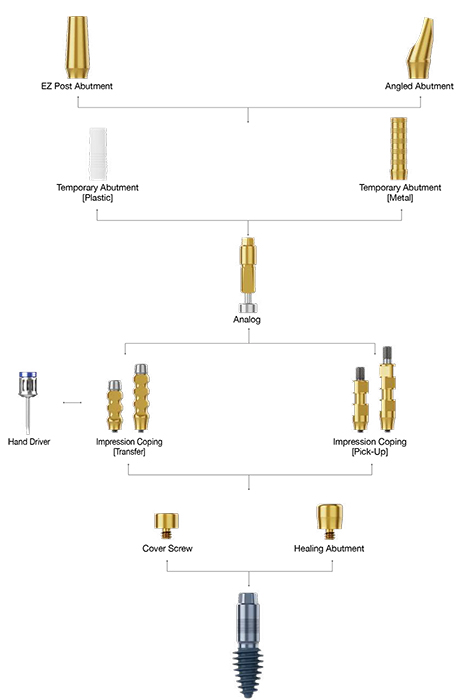Comparison of Changes in the Condylar Volume and Morphology in Skeletal Class III Deformities Undergoing Orthognathic Surgery Using a Customized versus Conventional Miniplate: A Retrospective Analysis
English 2022-08-25 PDF Lecture 448
Author
마케팅
Date
August 25, 2022
Abstract: With the great leap in the development of three-dimensional computer-assisted surgical
technology, surgeons can use a variety of assistive methods to achieve better results and evaluate
surgical outcomes in detail. This retrospective study aimed to evaluate the postoperative stability
after bilateral sagittal split ramus osteotomy by volume rendering methods and to evaluate how
postoperative stability di ers depending on the type of surgical plate. Of the patients who underwent
BSSRO, ten patients in each group (non-customized miniplate and customized miniplate) who met the
inclusion criteria were selected. Preoperative and postoperative cone-beam computed tomography
data were collected, and condylar morphological and landmark measurements were obtained using
Checkpoint and OnDemand software, respectively. The postoperative condylar morphological dataset
revealed no significant difference (p > 0.05) between the two groups. No significant difference (p > 0.05)
was observed between the two groups in horizontal, vertical, or angular landmark measurements
used to quantify operational stability. These results indicate that there is no difference in the surgical
outcome between the patient-specific system and the conventional method, which will allow clinicians
to take advantage of the patient-specific system for this surgical procedure, with favorable results,
as with the conventional method.
Keywords: bone plate; condylar position; orthognathic surgery; CAD/CAM; digital surgery















